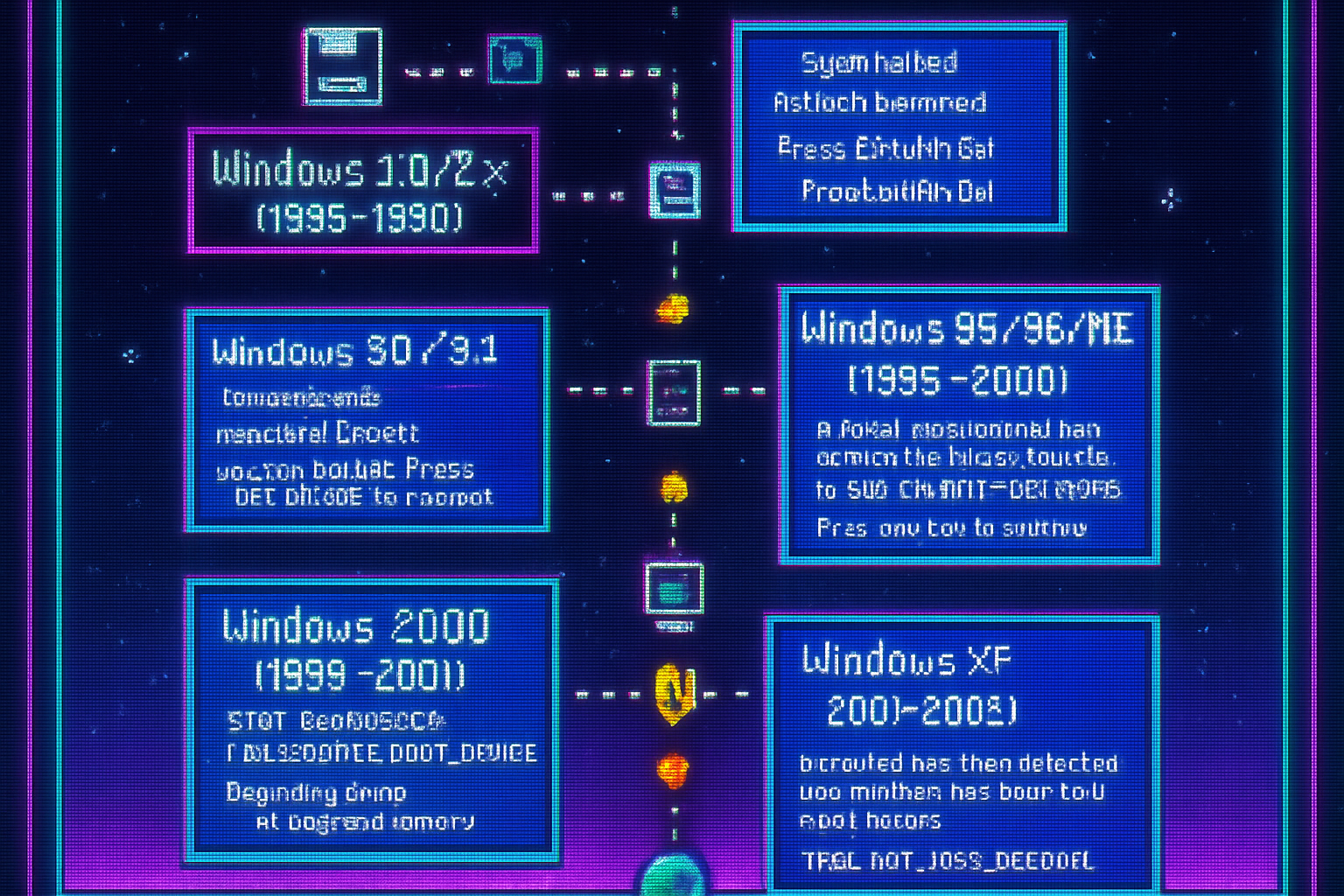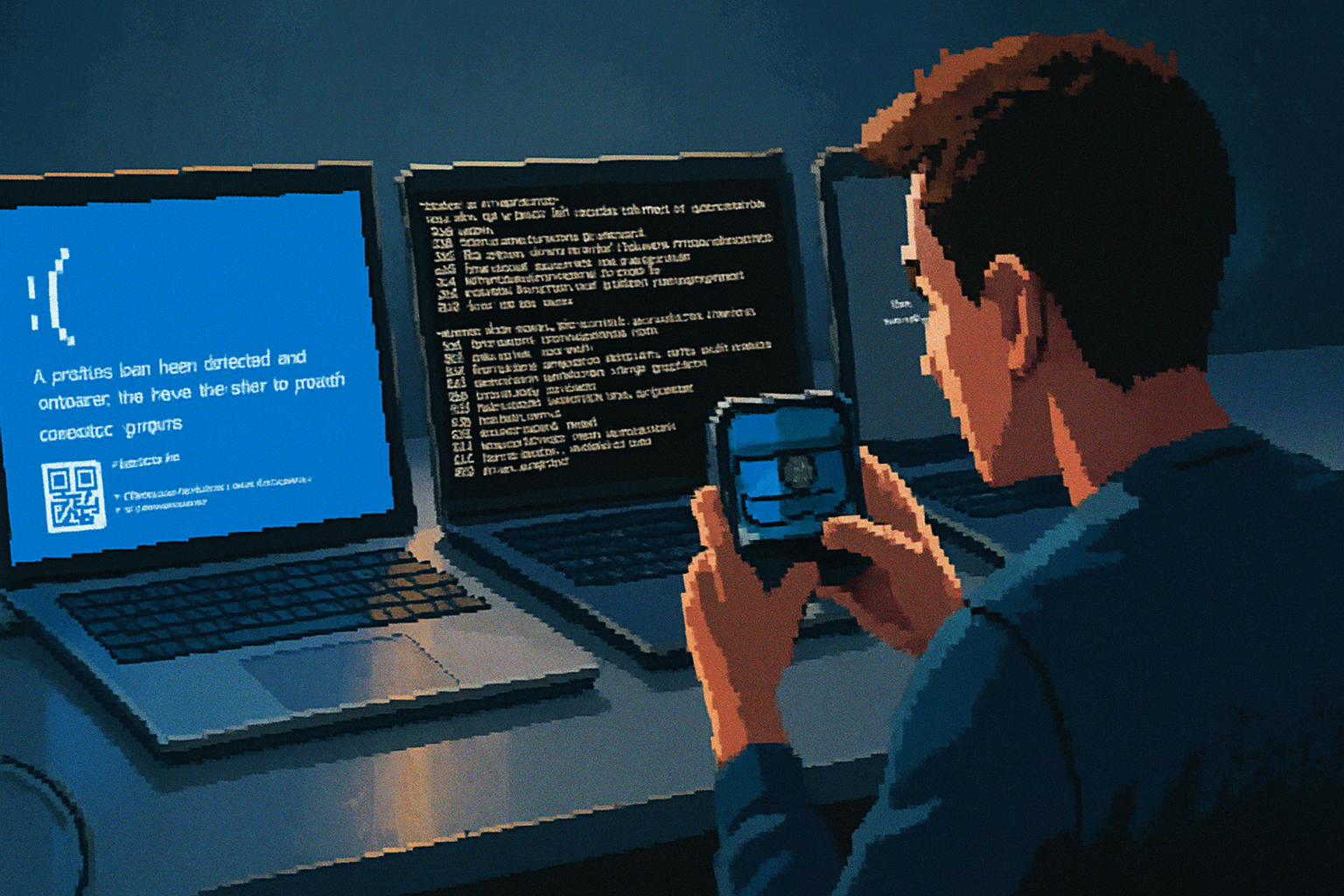· 3 min read
The Evolution of the Blue Screen of Death: A Comprehensive History
Uncover the fascinating history of the Blue Screen of Death (BSOD), from its beginnings in Windows 1.0 to its modern iterations, highlighting key design and functionality changes along the way.

Introduction
The infamous Blue Screen of Death (BSOD) is a term that sends chills down programmers’ and casual users’ spines alike. It has evolved significantly since its first appearance in 1985, marking critical junctures in Windows operating system development. In this article, we’ll delve into the rich history of the BSOD, examining its origins, evolution, and the notable changes that reflect the broader trends in computer operating systems.
The Birth of the Blue Screen: Windows 1.0
The Blue Screen of Death first made its appearance in Windows 1.0, albeit in a limited capacity. Early iterations featured simple error messages that indicated hardware or system conflicts. At this stage, the BSOD was more of a nuisance than a critical failure, and users could often restart their systems without significant loss of data.
The More Familiar Blue Screen: Windows 3.0 and 3.1
Things started to take a more recognizable turn with Windows 3.0 and 3.1. These versions showcased a more distinct BSOD for critical errors, utilizing blue backgrounds and white text to indicate serious system failures. The primary aim of these screens was to provide users with information about errors related to hardware and drivers, which was crucial at a time when compatibility issues were common.
The Windows 95 Era
With the launch of Windows 95 came a huge leap in graphical user interface (GUI) design and, subsequently, the BSOD. This iteration not only almost normalized the blue color but also introduced an understandable error code and a more detailed explanation of the problem. This marked a shift towards error handling and problem diagnosis, reflecting Microsoft’s focus on creating a user-friendly experience. Users witnessed their first glimpse of practical troubleshooting instructions, which were both welcomed and feared.
The Transition to Windows NT and Beyond
As Windows evolved into the NT architecture, the BSOD continued to adapt. It reached a new level of sophistication with the introduction of error codes and processor-specific messages. For developers and system administrators, BSODs became invaluable for debugging. Moreover, tools were developed to analyze these codes, thus turning the BSOD from a dreaded screen into a source of troubleshooting insights.
The New Millennium: Vista and Windows 7
The introduction of Windows Vista brought along a fresh redesign of the BSOD. While the blue screen remained a staple, it now featured an error code and a QR code, allowing users to search for troubleshooting solutions online using their smartphones-a revolutionary approach at the time. Windows 7 took this further with its less frequent BSOD encounters, owing to a more stable system design.
Modern Times: Windows 8 to Windows 11
The latest iterations of Windows have seen significant changes in the BSOD. Windows 8 introduced a new layout that included emoticons to convey the severity of the issue, making it somewhat more user-friendly. With the advent of Windows 10 and 11, the screens have not only received new graphics but also features improved user messaging to further assist in understanding the problem rather than instilling panic.
Conclusion
Over the decades, the Blue Screen of Death has transformed from simple error codes to complex diagnostic tools. Today’s BSOD is not merely a frightening blue screen; instead, it encapsulates Microsoft’s ongoing efforts to enhance user experience and problem resolution. While we all hope for minimal encounters with the BSOD, understanding its history provides insight into how far technology has come and how it continues to evolve.
For additional reading, you can explore the official Microsoft documentation on Windows error codes.



